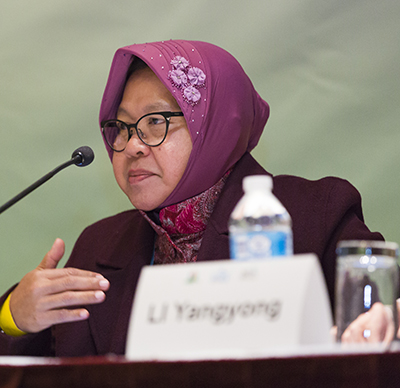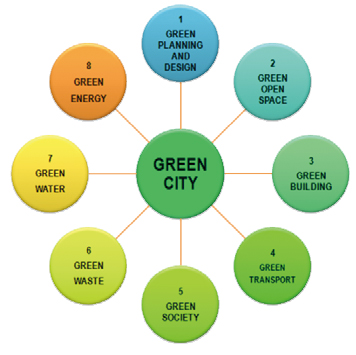


Committed to Sustainable Cities and Human Settlements for All

In Special Consultative Status with ECOSOC
Search
NameDescriptionContent
Home>>Text
Dr. Ir. Tri Rismaharini: Surabaya’s Innovation on Effectively Planning, Design, and Managing Urban Spatial Development
Source:
|
Author:gfhsforum
|
Published time: 2017-11-17
|
1264 Views
|
Share:

Dr. Ir.Tri Rismaharini, Mayor of Surabaya City, Indonesia
Surabaya is the second largest city in Indonesia. It has total population of approximately 3.3 Million people with total area of 334,51 km square. It is strategically located as the hub of eastern Indonesia as well as the center of development and economic activities in the region.
Out of the total area, around 60% is kampung, or urban village. Previously, kampung was known as slum area, underserviced, and is home of loweducated people and criminals. Learning this situation, the first initiative undertaken by Mayor was to improve the environmental quality of the area by teaching and inviting people to take part in waste management before improving the sanitation and infrastructure in there. Through the independent community-based waste management, people sort garbage from its source and they can sell the inorganic waste to the waste banks located all over the city and treat the organic ones into compost. The concept of 3R is applied here.
Thereafter, local economy is improved through the urban farming program and “Economic Heroes” which targets poor housewives. The City Government builds 361 sport fields, 372 city parks, and numerous public spaces spread evenly all over the city. Improvement of fisherman kampung and transformation of ex-red light districts are also essential.
To develop Surabaya as green city, urban forests are created, 2.800 Ha mangrove forest is preserved, and river bank is revitalized. Thousands of trees are planted along the street making a beautiful green lane and Car Free Day Program is carried out once in a week. In addition to the waste management, the city implements waste-to-energy project and has began using renewable energy. A regulation on Green Building concept is also in place. The city was planned based on a masterplan with the eight aspects of eco-city principle as shown in Figure 1.

2,800 Ha mangrove forest have been developed and designated as habitat of various local and migrant bird species. The area is also used as an eco-education center for students and as tourist destination.
In order to improve the living space, the government established regulations to optimize the city green space reaching to 30%-35% of total land area, consists of 20% - 25% as public open space and 10 % provided by the private sector. Public parks were transformed and developed from gas stations. There are by now 60 active parks equipped with playground and sport area all for free to the public.
Trees and flower beds are provided along the main street and road and also reaching narrow alleys of densely populated kampungs. The greening of the city is not for beautification purpose, but most important is to create better micro-climate condition for the sweltering afternoon heat, absorbing pollutants from the traffic as well as to improve land carrying capacity. Moreover, the city government is also keep encouraging the privates and communities to involve in the effort by providing urban farming training, award for the green and clean kampungs competitions, free seeds and compost, etc.
The development in Surabaya is directed to use vertical development concept in order to have more spaces allocated for public activities.
For more information, please contact: kim.chen@gfhsforum.org
Copyright © Global Forum on Human Settlements (GFHS)
